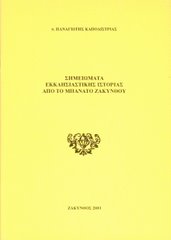by Fr. Panagiotis Kapodistrias
In 2025, the Christian world marks 1700 years since the First Ecumenical Council of Nicaea—a defining moment in the theological formation of the Church. The Council responded to a deep need of the early Christian community: the need for a common language of faith, theological clarity, and spiritual orientation. Nicaea became a lasting point of reference for the Church of its time and for every generation seeking the truth of faith through the living experience of the Church.
The Nicene Creed, the fruit of the First Ecumenical Council, distills the faith of the early Christians into concise words rich with theological depth. It reveals the identity of Christianity as a confession of relationship—as a witness to the encounter between God and humanity in history. Through this formulation, faith in God as Father is professed, the revelation of Christ as Son and Redeemer is affirmed, and the presence of the Holy Spirit as the Giver of Life in the world is confessed.
Nicaea as a source of spiritual continuity
In today’s world, where many experience confusion and dislocation, the Creed stands as an anchor of stability and a reference point for personal orientation. Nicaea offers responses to timeless questions: Who is God? What is His relationship to humanity? What does salvation mean? What is the role of the Church in the world?
The answers contained in the Creed arise from the testimony of lived experience. Christianity moves forward through the incarnate presence of Christ in the life of the faithful and in the Church’s being. Nicaea handed down a text that continues to be transmitted from generation to generation—through worship, the sacraments, and the daily faith of believers.
The “Credo” became common ground for the flourishing of theology, monastic life, social service, and ecclesial self-awareness. It illuminated periods of crisis, war, and division, strengthening the unity of the faithful and nurturing a shared identity. Through it, the Christian world continues to rediscover itself, to find direction, and to be renewed.
The future of Faith in the light of Nicaea
In the 21st century, Christianity faces new challenges: rapid technological change, cultural shifts, existential uncertainty, environmental strain, and social isolation. Faith is called to express itself with authenticity, depth, and heartfelt immediacy. The message of Nicaea casts a luminous path through these uncertainties.
The Creed unites Christians across cultures, languages, and historical experiences. It offers a foundation for unity and a starting point for dialogue. Its ecumenical character is rooted in the shared experience of divine truth.
Nicaea continues to inspire the Church to walk forward with confidence. The Council’s structure itself offers a model of collective discernment, prayer, dialogue, and spiritual attentiveness. In the faces of the Council Fathers, we glimpse a Church alive and vigilant—willing to deepen its understanding and take responsibility for its witness.
A livingiInheritance – An open legacy
Nicaea provides a secure spiritual map for every era. The Creed that emerged from it flows like a living river, nourishing and guiding the Church. Each word transmits the flame of apostolic faith. Each article gives voice to the experience of a Church conscious of her mission.
Today, 1700 years later, the legacy of Nicaea continues to guide the Church’s journey. The faith articulated in the Creed can bear fruit in societies seeking meaning, in people thirsting for truth and direction, in cultures in search of roots and a future.
Nicaea belongs to the past, moves within the present, and reaches toward the future. Its voice still echoes within the Body of the Church—in its liturgical life, its prayer, and in every heart that seeks the Living God. The Creed continues to whisper, with unwavering strength and clarity, the same words born from the burning heart of the Church: “I believe…”



































Δεν υπάρχουν σχόλια:
Δημοσίευση σχολίου